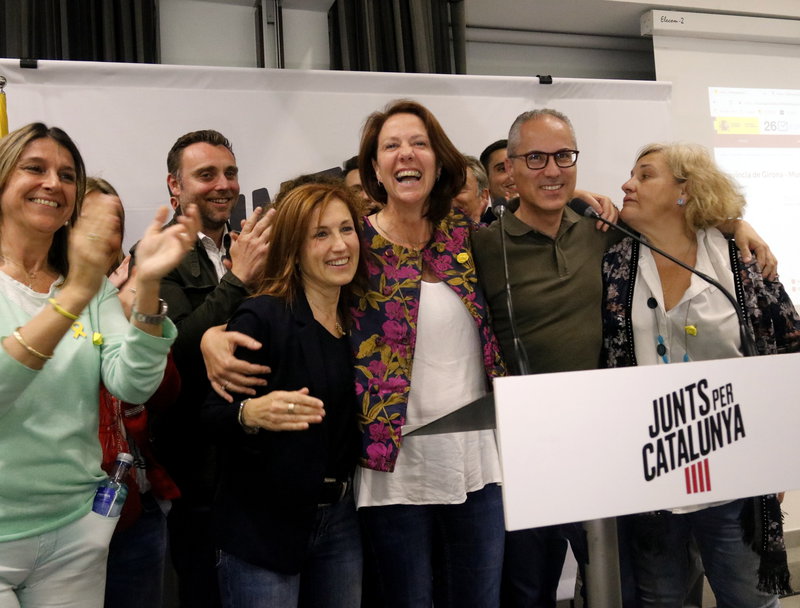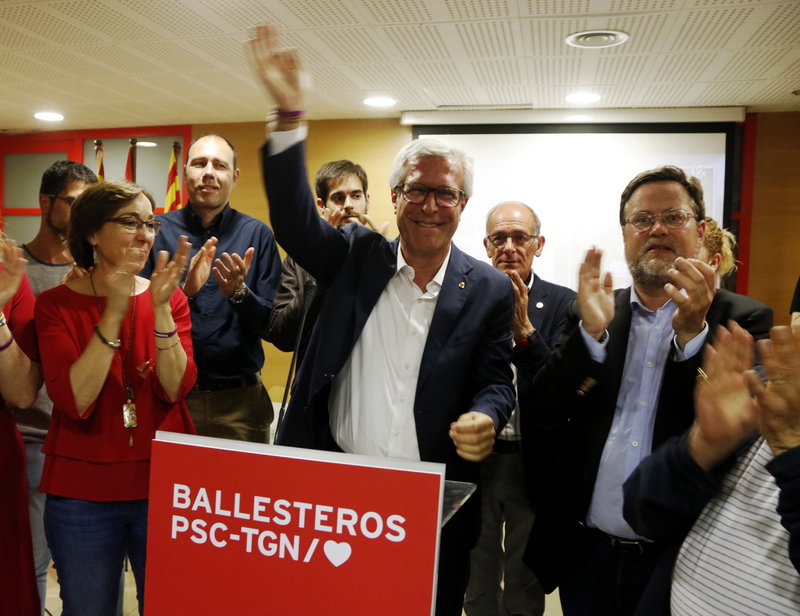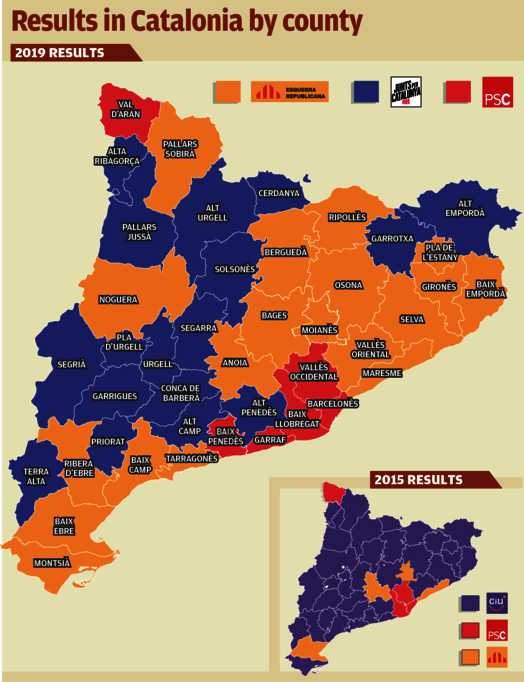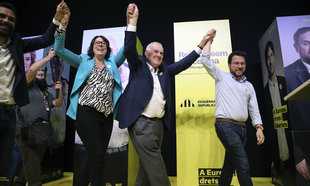The victory of the left
ERC and PSC were the big winners in the local elections, with Esquerra consolidating its position in the independence camp and the Socialists overcoming objections to the political prisoners
Just as if it were Groundhog Day, the Esquerra Republicana (ERC) and the Catalan Socialist (PSC) parties were the big winners in the local elections on May 26, repeating the trend set by the general election result a month earlier. For the first time since 1979, ERC was the most-voted party (with over 800,000) and the party that won the most seats (over 3,000), repeating the election results of April 28. Thus, the republicans confirmed their hegemony within the independence camp, with the sweetest part for them being winning the Barcelona city council, after being neck-and-neck with incumbent mayor, Ada Colau. The technical draw between two parties also took place in Lleida and Tarragona, although instead of Colau’s BComú party, it was between ERC and PSC, with the former taking the Lleida city council and the Socialists taking Tarragona.
Political scientist Berta Barbet explains the rise of ERC and PSC, saying the two parties “are managing to take the lead in their respective areas of influence: independence and the left, respectively.” According to Barbet, “this means they were able to win over the votes of parties that until recently were their competitors.” This leadership, she says, is related to “programmatic stability and the existence of a good territorial structure to mobilise and bring the vote together.” Another look at the global results shows that PSC was the second most-voted party (with over 750,000), although Junts per Catalunya (JxCXat) won more seats (2,700 compared to 1,300) and even took control of more local authorities than ERC, given that Carles Puigdemont’s party was dominant in the smallest towns.
The sum of all the votes cast for pro-independence parties came to 42.29% of the total, compared with four years ago when the figure was 45.05%. Catalonia’s political conflict, the existence of the jailed leaders and the suspension, just hours before the election, of ERC and JxCat MPs in the Spanish parliament do not seem to have been as decisive on the final outcome as was expected. In fact, the unionist PSC won big in the greater Barcelona area, where the party had just two absolute majorities before May 26 - in Santa Coloma de Gramenet and Sant Joan Despí - and nine after the election, adding Badia, Cornellà, Esplugues, Gavà, l’Hospitalet, Sant Boi and Viladecans. The Socialists also saw improved results in Baix Llobregat, Barcelonès and the Vallès, and can still hope to have some say in the capital itself.
Success and failure
The improvement in the position of some parties compared with the last elections in 2015 can only be explained by the failure of other parties to get their strategies right. In the case of the leftwing parties, for example, the Comuns and Podem parties paid the price for their decision to run separately in seventy-odd municipalities, which saw the coalition lose such strongholds as Terrassa and Sant Cugat.
According to figures published by El Nacional newspaper, Podem ran alone in 54 towns, competing against a Catalunya en Comú candidate in 35 of the cases. Of these 35, the Comuns party won 24 and Podem 11. The far left CUP party hung on to a quarter of its councillors, more than 300, but got little more than 115,000 votes. The biggest disaster for the anti-capitalists came in Barcelona, where they disappeared from the municipal political map.
As for the right and the unionist parties, their discourse of confrontation and division did not prove as popular as they had expected, and many voters turned their backs on them. Ciutadans (Cs), the party that won the Catalan election a year and a half ago, did not manage a victory in any town hall. Meanwhile, the Popular party (PP) continues in free fall in Catalonia, managing little over 100,000 votes and getting only 68 seats, a far cry from the 213,474 votes and 216 councillors it attained four years ago. Only the votes for Xavier García Albiol in Badalona and Manuel Reyes in Castelldefels avoided a complete catastrophe for the party. In the rest of the greater Barcelona area, the PP went from 40 to six councillors, and disappeared in places like Cornellà, Sant Cugat, Sabadell and Terrassa. For the moment, the only municipality they can hope to control is Pontons. Together, the Cs, PP and Vox parties represent a mere 3.39% of councillors in Catalonia.
Political scientist and sociologist Xavier Torrens points to the “multi-party” system to help explain why no party won an absolute majority in any Catalan capital. “Around Catalonia we find a polarised multi-party system, with five to seven parties that polarise their political positions, ideologically distant from each other, in an institutional dynamic that is centrifugal and tends to create two mutually exclusive blocs,” he says. In Catalonia, there are the pro-independence and the unionist blocs. In other countries, things revolve around the left-right axis, “which is something that could happen again here in a few years,” he adds.
Finally, Torrens differentiates between four types of parties, depending on the percentage of the vote obtained: “Two large parties, ERC and PSC, who exceed the 20% mark, a mid-sized party, JuntsxCat, with 15%, two minority parties, En Comú Podem and Ciutadans, with around 8%, and two small parties with 3%, which are CUP and PP.”
feature
The time for political pacts
With the vote fragmented in so many town halls, political parties are now forced to reach coalition agreements in order to be able to govern. The current political context could be decisive in determining which partners they choose. Professor of political science at Barcelona university, Xavier Torrens, believes that one of the key and unique aspects of the 2019 local elections is that, especially in large cities, “the election of new mayors will be influenced by the dynamic created by the independence process and the resulting trial of Catalan leaders in the Supreme Court in Madrid.” “Normally, the local elections have their own dynamic, but what will have a big impact in large cities is whether it is between pro-independence, unionist parties, or parties in favour of a self-determination referendum,” he points out. For Torrens, the most illustrative example is Barcelona, which has great symbolism due to its being the capital of Catalonia.








